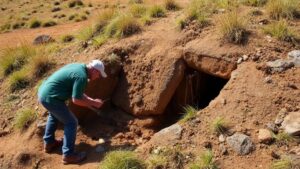Recovering Antique Glass Soda Bottles Along Forgotten Trails
Recovering Antique Glass Soda Bottles Along Forgotten Trails
The journey of discovering antique glass soda bottles is not just a hobby for collectors; it is a convergence of history, archaeology, and nostalgia. The practice of recovering these artifacts along forgotten trails and abandoned sites provides insight into the past, revealing social trends, regional tastes, and industrial advancements of yesteryear. This article will explore the techniques, significance, and real-world implications of recovering antique glass soda bottles, guiding enthusiasts through this fascinating endeavor.
The Historical Context of Soda Bottles
Antique glass soda bottles first gained popularity in the late 19th century. Initially used for containing carbonated beverages, these bottles are a testament to evolving consumer habits and technological innovations. The transition from soda fountains to bottled drinks changed how people accessed and consumed soft drinks, marking a significant cultural shift.
For example, the introduction of crown caps in the 1890s allowed for easier sealing of bottles, propelling the bottled soda market. Brands like Coca-Cola, which began distribution in 1886, played a pivotal role in popularizing these containers. Collectors often seek bottles from specific eras, as they can offer insights into regional production methods and branding strategies.
Locating Forgotten Trails
Finding forgotten trails is essential for recovering antique glass soda bottles. These trails often lead to old roadside dumps or abandoned general stores–locations where bottles were discarded and left behind. There are several strategies to identify and access these sites:
- Research historical maps and local archives to discover old settlement patterns.
- Engage with local historians and participate in community discussions.
- Use online forums and social media groups focused on bottle digging and historical recovery.
Each of these methods helps in pinpointing spots that are likely rich in forgotten artifacts, enhancing the chances of a successful recovery.
Techniques for Recovery
Once a suitable location is identified, the next step is the recovery process. Successful digging requires a combination of technique, patience, and respect for the environment. Some key techniques include:
- Using Hand Tools: Essential tools include trowels, shovels, and digging bars. These should be used to carefully remove soil layers without damaging the bottles.
- Screening Soil: Employing a screen to sift through excavated soil can help catch small, broken pieces that may go unnoticed.
- Mapping Recovery Sites: Keeping detailed notes about where bottles are found assists in understanding the historical context of each site.
Also, obtaining appropriate permits for digging in certain areas can prevent legal issues and promote responsible archaeology.
Identifying and Preserving Finds
Once bottles are recovered, identifying their age and significance is crucial. Collectors and enthusiasts often look for distinguishing characteristics such as:
- Embossing: Look for brands, logos, and locations embossed on the glass which can indicate rarity.
- Color: The color of the glass can signal its age; for example, cobalt blue and green bottles were popular in certain periods.
- Shape: Unique shapes and sizes can help identify the purpose and time period of the bottle.
Proper preservation requires clean, careful handling of the bottles. Rinsing with water and avoiding abrasive cleaners ensures that the integrity of the glass is maintained.
Real-World Applications: Engaging Communities
Recovering antique glass soda bottles along forgotten trails can have broader implications beyond individual collecting. Community engagement through organized digs and workshops promotes local history awareness. For example, certain historical societies invite the public to participate in archaeological digs, fostering a sense of community and shared heritage.
Also, recovered artifacts can be showcased in local museums or exhibitions, creating educational opportunities for schools and the general public. A case study in a Midwestern town showed that initiating a local recovery program increased community pride and tourism, as many visitors were drawn to the story behind the bottles displayed.
Conclusion and Actionable Takeaways
Recovering antique glass soda bottles along forgotten trails offers a unique blend of adventure, education, and connection to historical narratives. As enthusiasts embark on this journey, they should:
- Thoroughly research historical sites to maximize recovery efforts.
- Use effective excavation techniques, respecting the environment and preserving local heritage.
- Engage with the community to promote broader historical awareness and appreciation.
With the right preparation and respect for history, recovering antique glass soda bottles can yield remarkable discoveries that enrich our understanding of past societies and consumer culture.
